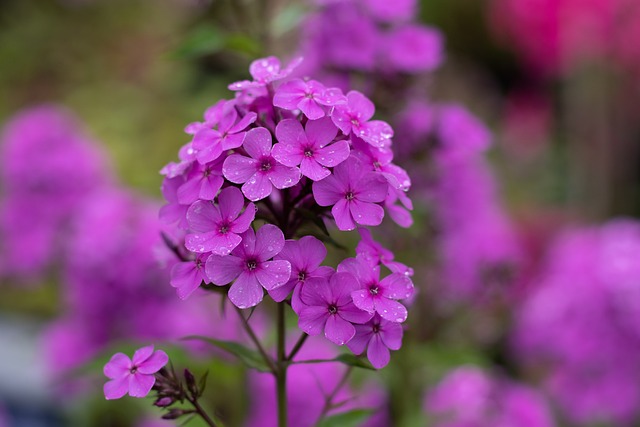I have known the writer Ann Finkbeiner for around 30 years now. She writes mostly about science, especially astronomy and cosmology, and possesses a deep and warm intelligence as well as formidable dexterity with the English language and a love of story. “Warm intelligence:” Ann can be as rigorous and dispassionately analytical as the coldest data scientist — she wasn’t married for many years to the late physicist Cal Walker for nothing — but her work is suffused with wonder and love for the universe and for knowledge and our ability to turn our small lives to the understanding of it all.
She’s also the originator of what has come to be called, among science writers, the Finkbeiner Test when writing about women in science:
I’m going to write the profile of an impressive astronomer and not once mention that she’s a woman. I’m not going to mention her husband’s job or her child care arrangements or how she nurtures her students or how she was taken aback by the competitiveness in her field. I’m not going to interview her women students and elicit raves about her as a role model. I’m going to be blindly, aggressively, egregiously ignorant of her gender.
An emphatic yes to all of that.

Ann and I were faculty colleagues at Johns Hopkins University and I know her to be cranky about writing and publishing and academia in a way I find endearing, in part because it aligns with my own crankiness about those subjects. We are the sort of friends who don’t see each other for three years, then get together for coffee and conversation and never once think, Why don’t we do this more often than every three years? She’s written several estimable books (I recommend “The Jasons: The Secret History of Science’s Postwar Elite”) and is a co-founder and curator of the blog “The Last Word on Nothing,” which I also commend.
Back in August, she published on TLWON an essay of her own that is so good I wish to share it. Pause a moment and read it here; it clocks in at only 830 words or so. Then please read a few paragraphs of my appreciation for its lovely lines.
The Boundary Conditions Being What They Are
Ann Finkbeiner
I’ve written books and didn’t find the experience pleasant: I’d go underground for 2 or 3 or 4 years, maybe 5, and when I’d stick my head up into the light of the world again, the world was changed. Like, during one of my underground sessions, the internet took hold and when I surfaced, the print magazines for which I’d written were saying their last goodbyes. Or during another session, my job whisked out from under me and ok, I was sick of academia anyway and worse yet, now that I was free to only write, I found I was also sick of my writing. All of this is to say, coming out of the pandemic is a lot like coming out of a book: new world, what the hell?
And of course even when it’s over, it’s not over. Just like page proofs have to be corrected and publicity has to be arranged and endured, the pandemic has its upticks and new variants and friends suddenly cancelling afternoon teas.
Meaning, I don’t know how to live in what remains of the past and simultaneously figure out how the present is different. I think this is a liminal state, neither land nor water but some kind of uncertain swamp in between. I do hate uncertainty which, too bad because at this point in time, the swamp is the rule, it’s non-negotiable, it’s the boundary condition.
“Boundary condition” means different things to different scientists but in general it’s the immovable thing that can’t be changed, only worked within. A river running along a granite wall has to run parallel to the wall: the wall sets the boundary condition.
One thing for sure: given current boundary conditions, I need therapy. Every week, I meet with a psychotherapist and a physical therapist; and every day I practice both. Shoulders back and down. Speak kindly to myself. Run my fingers up to door frame to the top. Separate the anxiety from the situation that’s provoking it. Hold a stretchy band in both hands with elbows at the side and pull my hands apart. Figure out what’s so frightening about wanting comfort. Lie down and slowly punch my arms into the air. Think of life’s little epiphanies. The tiny black hummingbird is at the feeder and the sun hits it just so and it turns iridescent green, and it drinks and drinks and then its head pops up and it winks out of space and time, gone.
Once I was in the woods, writing, in a cabin with a grand piano in it and a piano player needed to practice so I said sure, while you play I can write. I couldn’t. She worked her way through two volumes of Beethoven sonatas, and while Beethoven seems to write in sentences, his sentences were more complicated than mine and much more interesting so I got distracted and meanwhile she filled up the cabin with the Waldstein, up to the peaked roof, every atom of air in that cabin moved by Beethoven. I was breathing Beethoven.
How many years ago was that? Twenty? Thirty? I’m at the age where you don’t suddenly lose days or months or years, you lose decades. Getting old: another liminal state. I’m sticking my head out of the ground from the pandemic just in time to face old-age planning. Also someday, not as far away as it used to be, is death, another boundary condition. I have no particular reason to think about death but I am aware of the time. How can all this life just go away? I will miss it all so much. I look at the hummingbird, the little kids in my tree, the lottery card the neighbor leaves on my porch, other neighbors having a kids-in-bed girl-party on their porch, the extraordinary mix of people at the farmers’ market united in their focus on peaches and sweet corn, and I get blinded by loss; I don’t want to ever leave this. My therapist gets a little snippy: then don’t, she says, it’s all out there, you don’t need to miss it now.
Sticking a head up in the middle of a patch of dense, tall, intense green, ferny amsonias is a pale magenta phlox. I had deleted all the phlox years ago because it wasn’t flowering much and got terrible fungus, and I dug it all out. And yet years later, there it is. New world: what the hell? The phlox had been white and this pale magenta guy had to go back into its ancestry for its color and its will to live. “I’m here,” it says, “I am what I am and I’m here. Make of that what you will. And also just do the best you know how.”
My reader mind glides through Ann’s piece and thinks, Wise and lovely. My writer mind lights on each word, rolls back two paragraphs and reads them again, listens to a sentence three times, spots the reappearance of certain phrases, the artful use of repetition. Writer mind builds a schematic diagram of the piece’s structure, smiles, smiles again, and thinks, This is so good. And because we’re friends, Well done, Annie.
If an essay is thinking through prose, or the prose record of thought, or both, Ann’s first three paragraphs are her mind working its way to the core question:
Meaning, I don’t know how to live in what remains of the past and simultaneously figure out how the present is different.
She also introduces a pair of ideas that animate and orient her mind on this day: the liminal state and the boundary condition. Those ideas, which she deftly defines, are simultaneously binders that hold the essay together and lenses through which she refines and sharpens her thinking.
She’s established that she’s someone who hates uncertainty while living in an uncertain period in her life and in the culture, and she copes with therapy, physical and psychological. Braiding the precise and mundane details of what this means day-to-day calls forth a striking example of something that brings joy amidst the inchoate and the frightening:
The tiny black hummingbird is at the feeder and the sun hits it just so and it turns iridescent green, and it drinks and drinks and then its head pops up and it winks out of space and time, gone.
Here my writer mind ruefully nods to a sentence so good I wished I’d written it first. (And notes, in that same paragraph, how an adroit writer and thinker beautifully characterizes the effect of the Waldstein sonata — “every atom of air in that cabin moved by Beethoven” — then lets that sentence lead her to the lovely, “I was breathing Beethoven.” A two-line demonstration of the essay process.)
Followed by a seeming stray thought: a memory of a cabin and a grand piano, winking into existence as if filling the space vacated by the hummingbird, limned in several more striking sentences that nevertheless prompt my writer mind to say, Mrmff? What’s this doing here? Answered in the next graph by the author pondering how long ago she breathed Beethoven and where the hell do the days and years ago and awareness of the ultimate boundary condition, her own expiration date. Which leads to all that she’ll miss when she’s gone and her therapist’s snippy but apt suggestion that it’s silly to miss in advance what’s still all before you.
Taking the therapist’s advice, Ann makes a gift of one more thing sticking its head up — a trope, by the way, that appears three times and serves as one more thing to hold all of this together — this time a stubborn phlox that refuses to exit the stage of her garden and in its atavistic persistence points her mind to a destination, a state of awareness she can live with:
“I’m here,” it says, “I am what I am and I’m here. Make of that what you will. And also just do the best you know how.”
I cannot improve on that. So here I shut up and simply give thanks.
* * *
Dale Keiger, retired editor of Johns Hopkins Magazine, is author of the anthology “The Man Who Signed the City: Portraits of Remarkable People” and writes a newsletter of essays in “The Joggled Mind.”



